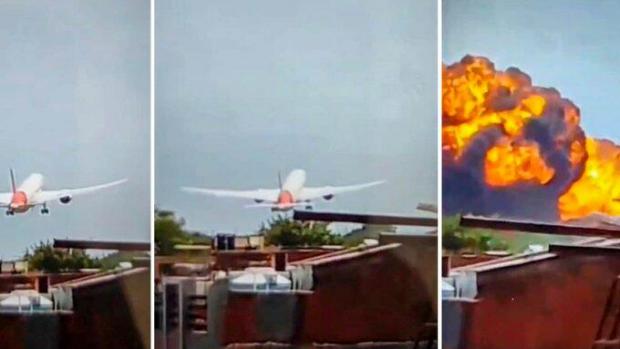
Breaking News
 Widow of killed fire chief not satisfied with Secret Service suspensions...
Widow of killed fire chief not satisfied with Secret Service suspensions...
 Gunman leaves multiple injured at church after shooting cop at Kentucky's Blue Grass Airport
Gunman leaves multiple injured at church after shooting cop at Kentucky's Blue Grass Airport
 One year later: White House highlight Trump's legacy on anniversary of assassination attempt
One year later: White House highlight Trump's legacy on anniversary of assassination attempt
 Arizona homeowner fined by petty HOA for act of kindness during extreme heat
Arizona homeowner fined by petty HOA for act of kindness during extreme heat
Top Tech News
Magic mushrooms may hold the secret to longevity: Psilocybin extends lifespan by 57%...
 Unitree G1 vs Boston Dynamics Atlas vs Optimus Gen 2 Robot– Who Wins?
Unitree G1 vs Boston Dynamics Atlas vs Optimus Gen 2 Robot– Who Wins?
 LFP Battery Fire Safety: What You NEED to Know
LFP Battery Fire Safety: What You NEED to Know
 Final Summer Solar Panel Test: Bifacial Optimization. Save Money w/ These Results!
Final Summer Solar Panel Test: Bifacial Optimization. Save Money w/ These Results!
 MEDICAL MIRACLE IN JAPAN: Paralyzed Man Stands Again After Revolutionary Stem Cell Treatment!
MEDICAL MIRACLE IN JAPAN: Paralyzed Man Stands Again After Revolutionary Stem Cell Treatment!
 Insulator Becomes Conducting Semiconductor And Could Make Superelastic Silicone Solar Panels
Insulator Becomes Conducting Semiconductor And Could Make Superelastic Silicone Solar Panels
 Slate Truck's Under $20,000 Price Tag Just Became A Political Casualty
Slate Truck's Under $20,000 Price Tag Just Became A Political Casualty
 Wisdom Teeth Contain Unique Stem Cell That Can Form Cartilage, Neurons, and Heart Tissue
Wisdom Teeth Contain Unique Stem Cell That Can Form Cartilage, Neurons, and Heart Tissue
 Hay fever breakthrough: 'Molecular shield' blocks allergy trigger at the site
Hay fever breakthrough: 'Molecular shield' blocks allergy trigger at the site
Air India Crash: Fuel Switches On Boeing 787 "Cutoff" During Takeoff

The footage showed the widebody aircraft taking off down a runway in the western Indian city of Ahmedabad, but shortly after rotation, it suddenly lost altitude and crashed into a residential area, sparking all sorts of speculation about what may have caused the crash that killed 260 people. Since then, Indian authorities have remained largely silent—until now.
A newly released preliminary report may finally shed light on what went wrong. Spoiler alert: it's great news for Boeing. Early findings suggest the mid-air disaster was not due to a mechanical flaw in the engines, but likely the result of human error.
On Saturday, India's Air Accident Investigation Bureau released a report revealing that the fuel control switches on the Boeing 787 were set to "cutoff" just seconds after takeoff, explaining why the widebody jet failed to gain sufficient lift after rotation, as thrust could not be produced with Jet A fuel supply cut off.
"The aircraft achieved the maximum recorded airspeed of 180 Knots IAS at about 08:08:42 UTC and immediately thereafter, the Engine 1 and Engine 2 fuel cutoff switches transitioned from RUN to CUTOFF position one after another with a time gap of 01 sec. The Engine N1 and N2 began to decrease from their takeoff values as the fuel supply to the engines was cut off," the report read.
The report continued, "In the cockpit voice recording, one of the pilots is heard asking the other why did he cutoff. The other pilot responded that he did not do so."
By the time the one pilot realized the fuel had been cut off and flipped the switches back to "run," it was too late. Although the engines began relight sequences, the aircraft had already reached its peak speed of 180 knots at just a few hundred feet of altitude—leaving no time for trust recovery.
More details from the report:
As perthe EAFR, the Engine 1 fuel cutoff switch transitioned from CUTOFF to RUN at about 08:08:52 UTC. The APU Inlet Door began opening at about 08:08:54 UTC, consistent with the APU Auto Start logic. Thereafter at 08:08:56 UTC the Engine 2 fuel cutoff switch also transitions from CUTOFF to RUN. When fuel control switches are moved from CUTOFF to RUN while the aircraft is inflight, each engines full authority dual engine control (FADEC) automatically manages a relight and thrust recoverysequence of ignition and fuel introduction.

 AI Getting Better at Medical Diagnosis
AI Getting Better at Medical Diagnosis

